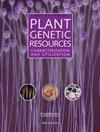双色牡荆叶绿体全基因组的研究。并与其它属牡荆复合体的比较分析
IF 0.7
4区 生物学
Q3 PLANT SCIENCES
Plant Genetic Resources: Characterization and Utilization
Pub Date : 2023-06-29
DOI:10.1017/s1479262123000370
引用次数: 0
摘要
双色兰、三叶兰和圆叶兰是菲律宾有药用记录的一个物种复合体的一部分。我们通过下一代测序组装了双色紫堇的第一个叶绿体基因组,并将其与早期建立的三叶紫堇和圆叶紫堇的叶绿体基因组进行了比较,以进一步了解它们的基因型差异。为了确保在未来的分类修订中继续利用研究成果,我们对用于产生质体体的参考种质PBN 2018-674的形态进行了表征。双色紫堇叶绿体基因组全长154,460 bp,编码基因131个,其中mRNA基因87个,tRNA基因36个,rRNA基因8个。使用来自不同类型地点的单独加入,同样建立了相同的叶绿体基因组,表明其保守性。与三叶卷叶卷和圆叶卷叶卷相比,这两个物种的基因组特征略有差异;然而,在13个通常具有保守性质的蛋白质编码基因中表现出单核苷酸多态性。对其与其他12个Lamiaceae物种的基因组进行系统发育分析,发现该物种复群具有较高的自举支持度(>88%),并认为trifolia是与双色v最近的亲缘关系。鉴定出的质体变异可作为区分三种密切相关基因型的标记,帮助菲律宾草药行业提供更稳定的优质草药来源。本文章由计算机程序翻译,如有差异,请以英文原文为准。
Characterization of the complete chloroplast genome of Vitex bicolor Willd. and its comparative analyses with other species belonging to the Vitex trifolia complex
V. bicolor, V. trifolia s. str. and V. rotundifolia are part of a species complex that has recorded medicinal use in the Philippines. We assembled the first chloroplast genome of V. bicolor through next-generation sequencing and compared this to earlier established chloroplast genomes of V. trifolia s. str. and V. rotundifolia to provide additional insights into their genotypic differences. To ensure the continued utility of the research outputs in case of future taxonomic revisions, we characterized the morphology of PBN 2018-674, the reference germplasm utilized to generate the plastome. The complete chloroplast genome sequence of V. bicolor was 154,460 bp long with 131 coding genes comprising 87 mRNA genes, 36 tRNA genes and 8 rRNA genes. Using a separate accession from a different type locality, an identical chloroplast genome was equally established, indicating its conserved nature. When compared to V. trifolia s. str. and V. rotundifolia, slight variations were observed in genome features between these species; however, single nucleotide polymorphisms were exhibited in 13 protein-coding genes that often have a conserved nature. A phylogenetic analysis of the assembled genome, together with 12 other Lamiaceae species, exhibited high bootstrap support (>88%) within the species complex, and associated V. trifolia as the closest relative of V. bicolor. The identified variations in the plastomes can be utilized as markers that could distinguish the three closely related genotypes which can help the Philippine herbal industry provide a more stable source of quality herbal medicines.
求助全文
通过发布文献求助,成功后即可免费获取论文全文。
去求助
来源期刊

Plant Genetic Resources: Characterization and Utilization
Agricultural and Biological Sciences-Agronomy and Crop Science
CiteScore
2.80
自引率
0.00%
发文量
29
审稿时长
>12 weeks
期刊介绍:
Plant Genetic Resources is an international journal which provides a forum for describing the application of novel genomic technologies, as well as their integration with established techniques, towards the understanding of the genetic variation captured in both in situ and ex situ collections of crop and non-crop plants; and for the airing of wider issues relevant to plant germplasm conservation and utilisation. We particularly welcome multi-disciplinary approaches that incorporate both a technical and a socio-economic focus. Technical aspects can cover developments in technologies of potential or demonstrated relevance to the analysis of variation and diversity at the phenotypic and genotypic levels.
 求助内容:
求助内容: 应助结果提醒方式:
应助结果提醒方式:


